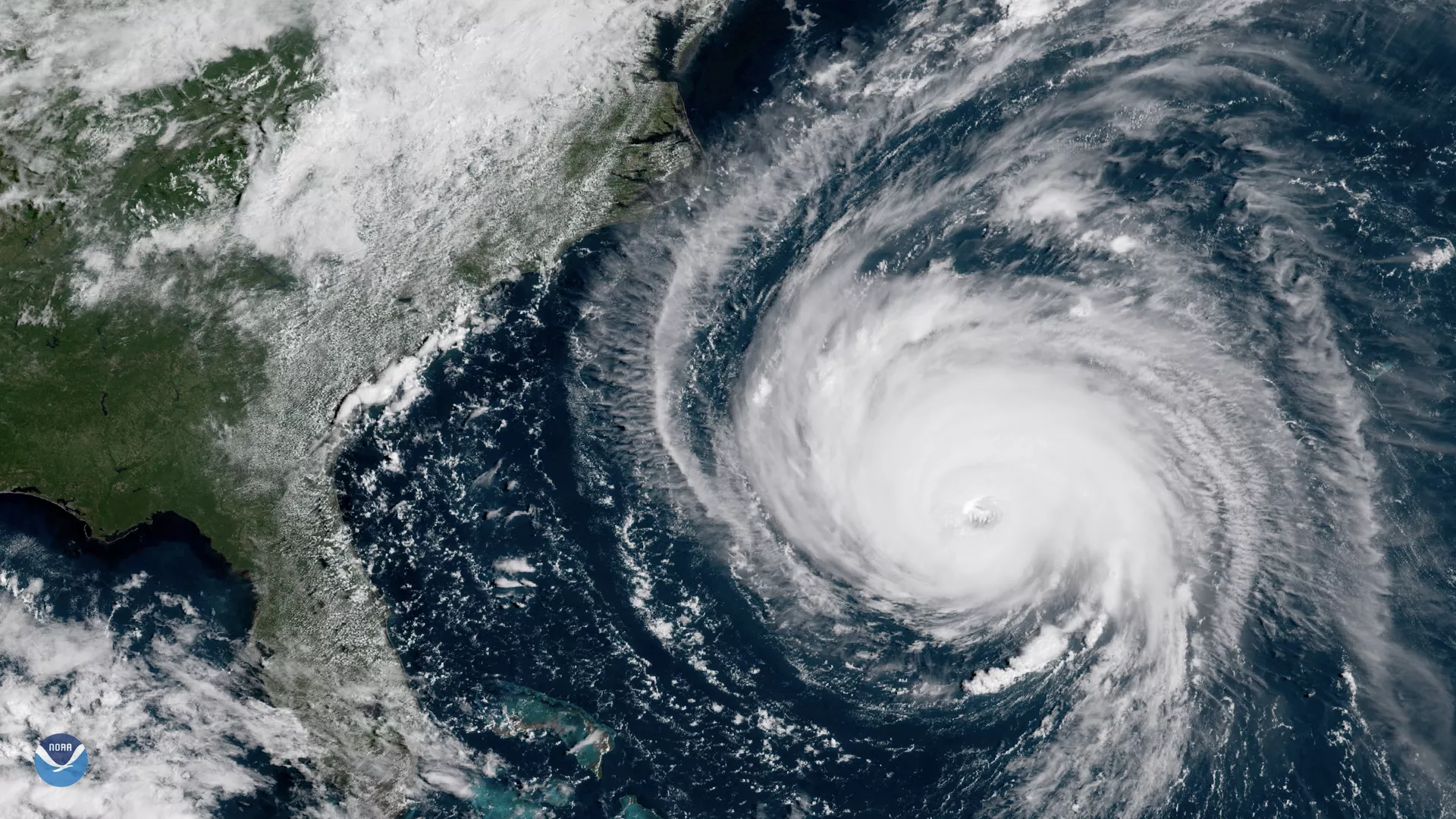
Hurricane Florence was still a dangerous Category 3 storm with 125 mph sustained winds, as it continued to move closer to the coast of the Southeastern U.S. on September 12, 2018.
This geocolor image from NOAA's GOES East satellite shows Florence's well-defined eye and outermost cloud bands as it approached the Outer Banks of North Carolina at 10:45 a.m. ET on September 12. The center of the storm was expected to make landfall along the coast of the Carolinas early Friday morning.
At 2 p.m. September 12, Florence was located about 435 miles southeast of Wilmington, North Carolina and moving northwest at around 16 mph. Hurricane-force winds extended up to 70 miles from the center of the storm, and soon began reaching the coast of the Carolinas. Hurricane warnings were in effect across the entire North Carolina coast and parts of northern South Carolina, while flash flood watches extended inland away from the coast in both states.
The National Hurricane Center warned that Florence would slow down considerably late Thursday into Friday as it made landfall, elevating the risk of "life-threatening storm surge" along the coast and high potential for catastrophic flooding as the storm dumped "heavy and excessive rainfall" across the Carolinas.
The GOES East geostationary satellite, also known as GOES-16, provides coverage of the Western Hemisphere, including the United States, the Atlantic Ocean and the eastern Pacific. The satellite's high-resolution Advanced Baseline Imager provides optimal viewing of severe weather events, including thunderstorms, tropical storms and hurricanes.
